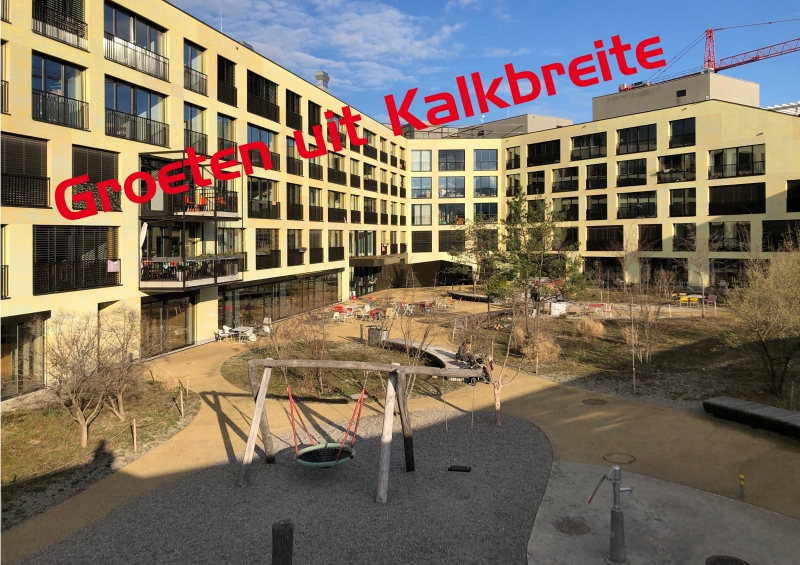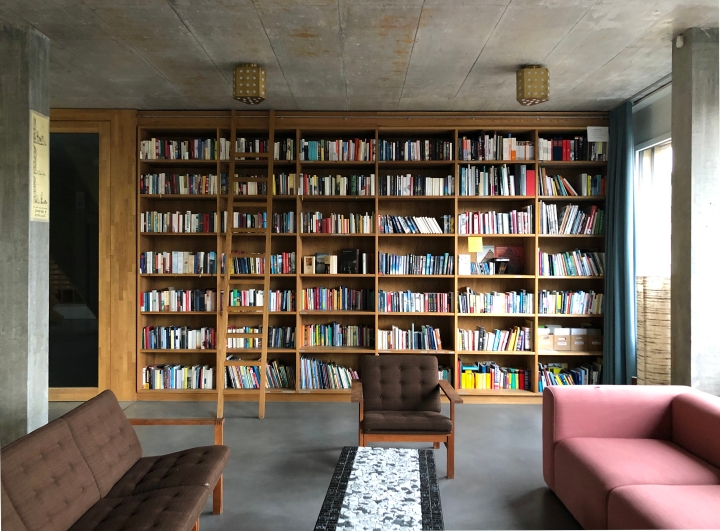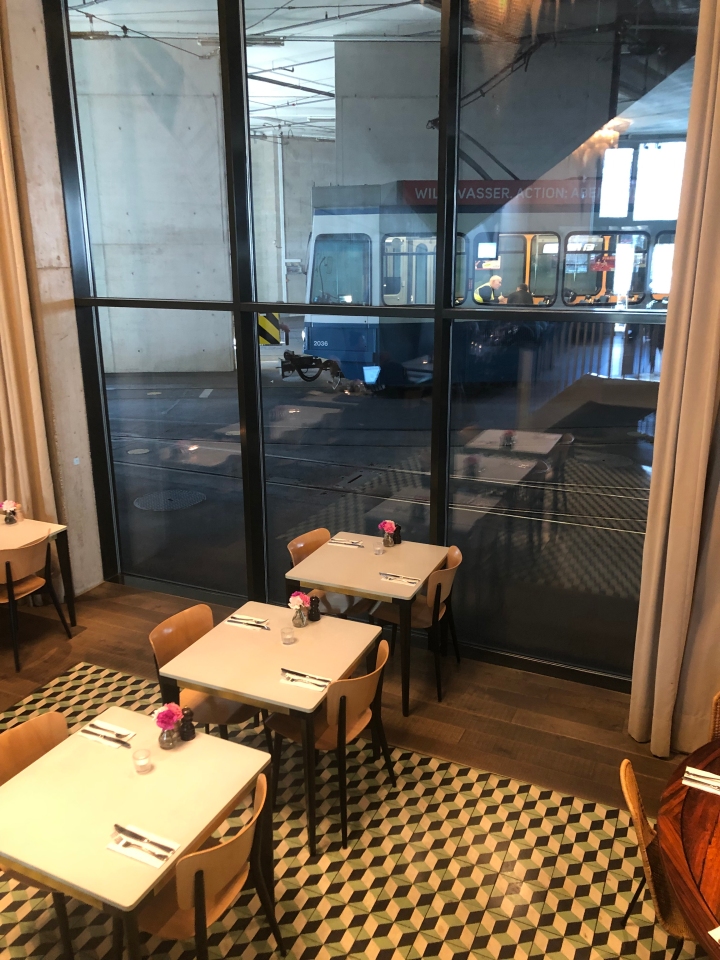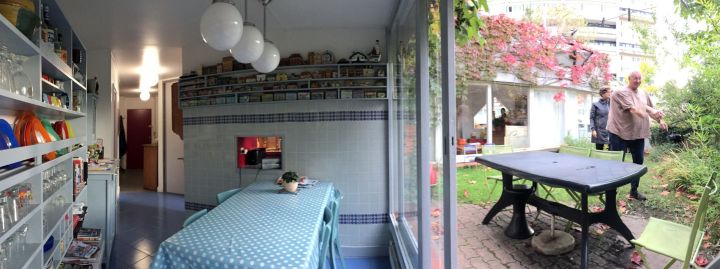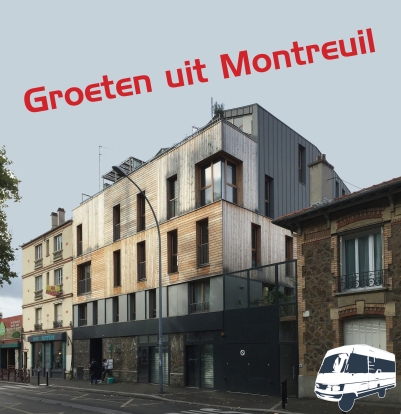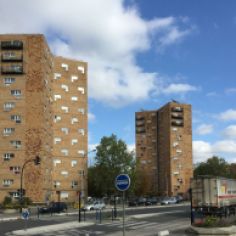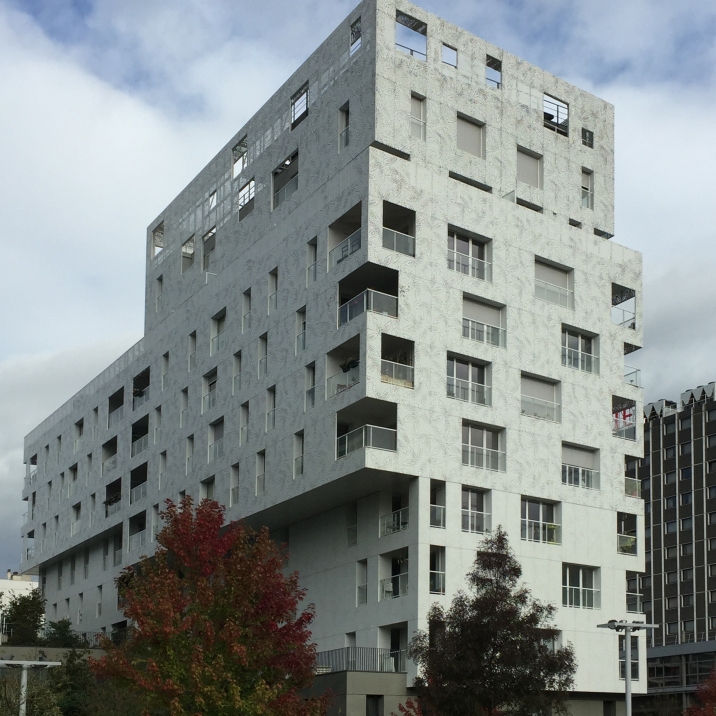Het is heel bijzonder dat juist een welvarende en dure stad als Zürich erin slaagt om daadwerkelijk aantrekkelijke en betaalbare woningbouw te realiseren en daarmee jonge mensen, gezinnen en de lage en middeninkomens in staat stelt in de stad te blijven wonen. De sleutel van dit succes ligt bij de Wohnungsbaugenossenschaften.
De Zwiterse Genossenschaften –de Nederlandse versie is de wooncoöperatie– ontstonden aan het einde van de 19e eeuw. De snelle groei van de steden maakte het organiseren van betaalbare woningbouw voor de arbeidersklasse noodzakelijk. In die periode werd in Nederland de woningwet ingevoerd en werden de woningbouwverenigingen opgericht. In Zwitserland leidde deze situatie tot de oprichting van Genossenschaften. In 1910 werd daar een wet aangenomen die de gemeentes verplichtte om goedkope grond en leningen beschikbaar te stellen. Hiermee werd het mogelijk voor arbeiders om zelf een Genossenschaft te vormen. De spoorwegarbeiders waren de eersten die zich verenigden in de BEP, nog steeds één van de grotere Genossenschaften in Zurich.
In tegenstelling tot onze woningcorporaties , op dit moment bijna allemaal stichtingen, zijn de huurders in een Genossenschaft gezamenlijk eigenaar en hebben de huurders ook invloed op het bestuur. Alle huurders brengen een klein kapitaalsaandeel in, het overige leent de Genossenschaft bij een bank. Het interessante van dit model is dat er geen rendementsdoel is. Er is dus, behalve misschien indexatie van onderhoudskosten, geen enkele noodzaak om de kostprijs gerelateerde huur te verhogen. De huren blijven daarom altijd laag.
gebeurde er een hele tijd weinig. Pas in de jaren ’80 ontstonden er nieuwe ontwikkelingen toen krakers zich gingen verenigen in het opknappen van vervallen panden in de binnenstad. Uit deze ontwikkeling zijn in Zürich een aantal nieuwe Genossenschaften ontstaan met een meer maatschappelijk geëngageerde agenda, zoals Kraftwerk 1 en Kalkbreite.
In de jaren ’80 en ’90 was er veel vraag naar kantoorruimte in het centrum. Dit dreef de prijzen op. Gekoppeld aan de tendens dat veel gezinnen de ruimte buiten de stad opzochten werd er bijna niet meer gewoond in het hart van de stad. Om de stad weer leefbaarder te maken werd de leus ’10.000 woningen in 10 jaar’ inzet van de gemeenteraadsverkiezingen. Het gemeentebestuur stelde zich daarmee tot doel aan een einde te maken aan deze vastgoedcrisis. Het doel was vooral om gezinnen in de stad te houden. En dat is ook gelukt, het geboortecijfer is nu hoger dan het sterftecijfer en het aantal inwoners in Zürich is sinds 1998 toegenomen met 50.000.
Op dit moment is 25% van de woningen in Zürich in handen van ofwel de gemeente of de Genossenschaften. De overige 75% is eigendom van particulieren en beleggers. Als je dit ziet als gereguleerde huur dan is dit een laag percentage in vergelijking met bijvoorbeeld Amsterdam, waar 42% van de woningen eigendom is van de woningcorporaties. Maar het percentage is weer heel hoog als je dit ziet als de specifieke eigendomsvorm die het is: huren met aandeelhouderschap en zeggenschap. Dat kennen we in Nederland namelijk nog amper. De bevolking van de stad Zürich heeft er in 2011 voor gekozen om te streven dit aandeel verder te verhogen tot 33%.
Tijdens ons bezoek aan Zürich spraken we met Astrid Heymann, directeur vastgoed en beheer van de gemeente Zürich. Zij vertelde ons dat de gemeente in principe alle grond, die wordt uitgegeven voor woningbouw in erfpacht uitgeeft aan Genossenschaften, en daar bepaalde eisen bij stelt. Zo moet in elke ontwikkeling een deel bestemd zijn voor gesubsidieerde woningen voor de allerlaagste inkomens. Deze woningen zijn in huur ongeveer een kwart goedkoper, maar gelijkwaardig in oppervlak, afwerking en ontwerp. Ook worden eisen gesteld aan het woonoppervlak per persoon en worden grote woningen voor gezinnen gestimuleerd.
Bij de uitgifte van nieuwe kavels worden geïnteresseerde Genossenschaften uitgenodigd een visie op te stellen. Uit deze visies selecteert de gemeente de meest geschikte partij om de kavel te gaan ontwikkelen, op basis van de visie op programma, doelgroep, financiën, duurzaamheid en toegevoegde waarde voor de buurt. Om grip te houden op de kwaliteit, zit er altijd een vertegenwoordiger van de gemeente in het bestuur van een Genossenschaft. Nadat een Genossenschaft is geselecteerd om een kavel te ontwikkelen organiseren ze samen met de gemeente een ontwerpprijsvraag.
Op die manier zijn onlangs twee locaties in Zürich uitgegeven: Kochareal en Zollhaus. Het is een voormalig krakersbolwerk aan de noordwestzijde van de stad. Kraftwerk1 heeft de selectie voor het Kochareal weten te winnen door samen te werken met Genossenschaft ABZ en ontwikkelaar Senn. Zollhaus is de tweede ontwikkeling van Genossenschaft Kalkbreite. Net als het eerder door deze Genossnschaft ontwikkelde project Kalkbreite ligt het Zollhaus op een zeer stedelijk en lastige kavel pal tegen het spoor aan. Door een concept met een grote mix aan woninggroottes voor verschillende doelgroepen, een groot aandeel niet-woonfuncties, een proces gericht op het laag houden van de kosten en aantoonbare ervaring met effectieve participatieve ontwikkeling heeft Kalkbreite deze selectie gewonnen.
De recente projecten die we in Zurich hebben gezien van de nieuwe Genossenschaften vormen een interessant model voor de opgave waar de Nederlandse steden voor staan; het ontwikkelen van veel betaalbare woningen op een manier die de betrokkenheid van bewoners bij de ontwikkeling van de stad vergroot.
De werkwijze van de Zürichse Genossenschaften omvat het beste van beide; een zeer professionele werkwijze gecombineerd met zeggenschap en eigenaarschap bij huurders voor alle lagen van de samenleving. Hiermee ontstijgt ontwikkeling met zeggenschap het kleinschalige en enigszins elitaire karakter van CPO zoals we dat in Nederland kennen. De nieuwe Genossenschaften bouwen samen aan integrale, gemengde en inclusieve buurten, waar verschillende groepen op een langdurig betaalbare manier kunnen wonen. Ze pakken stukken stad aan die lang onberoerd zijn geweest, omdat ze voor andere partijen te lastig zijn en herstellen zo het stedelijk weefsel. Dit succes zou niet bestaan zonder een gemeente die dit structureel mogelijk maakt en stimuleert.
lees ook onze blogs over Kalkbreite, Zwicky Sud en Hunziker Areal





















